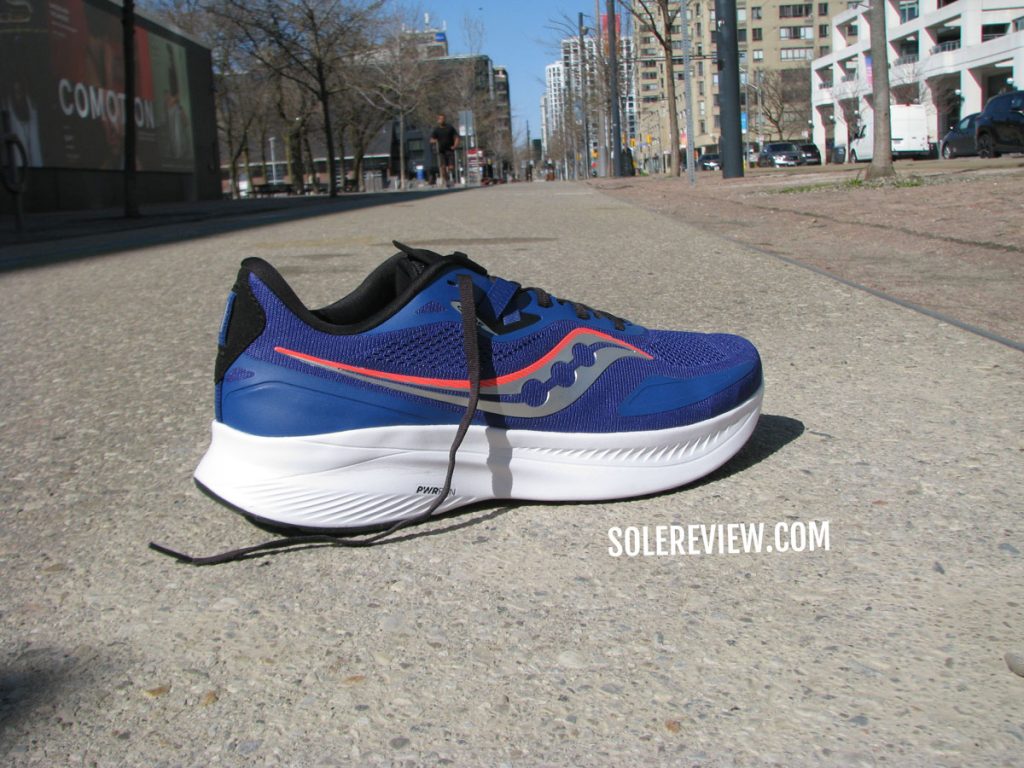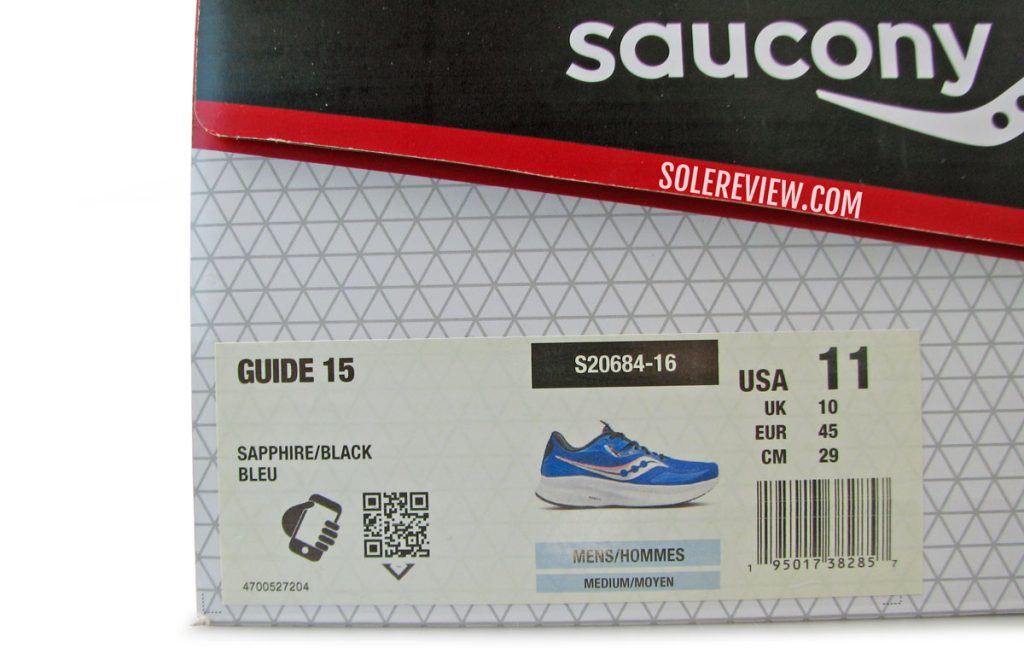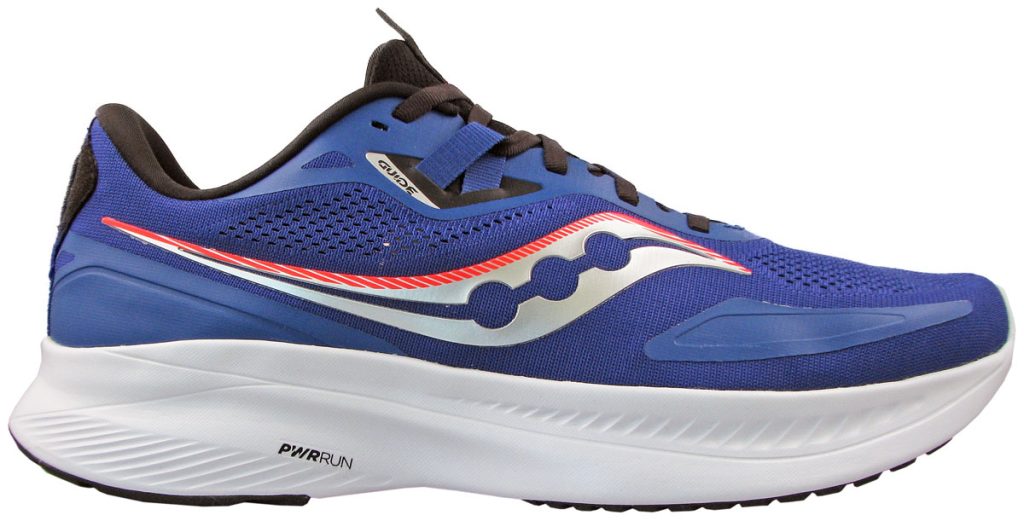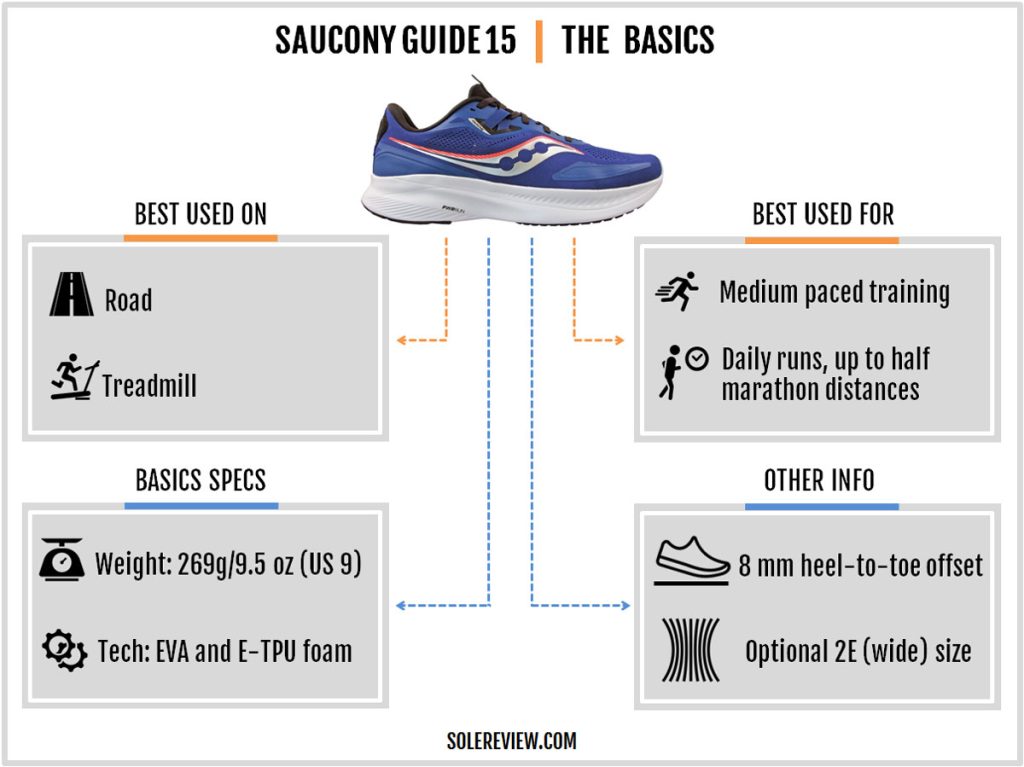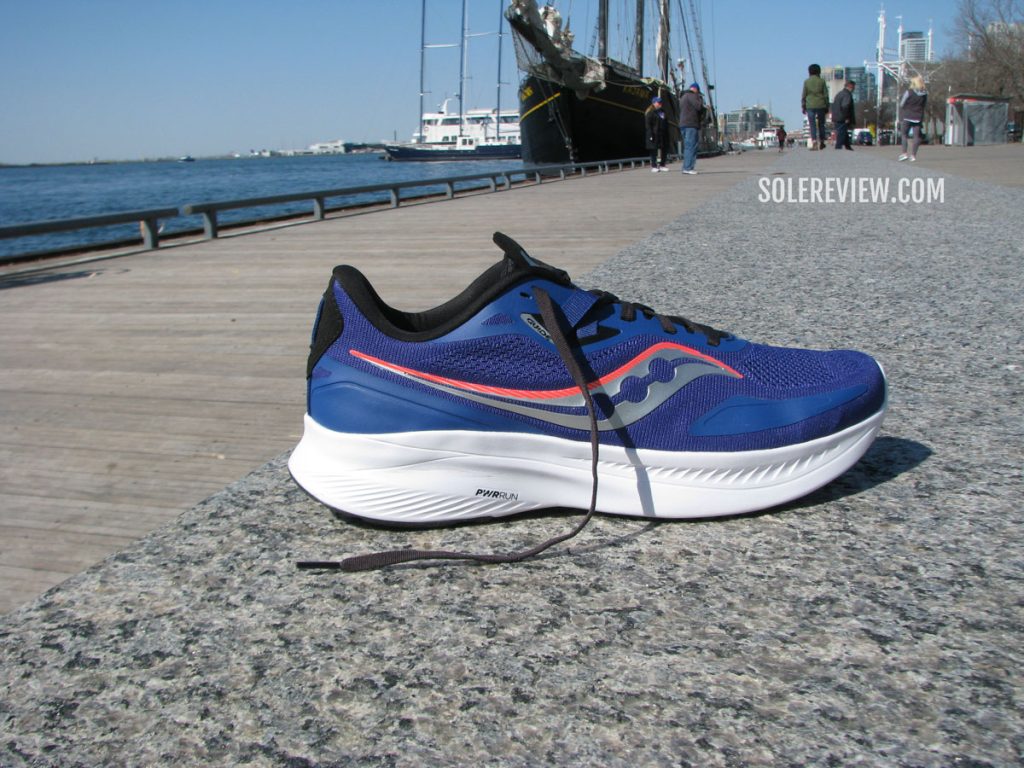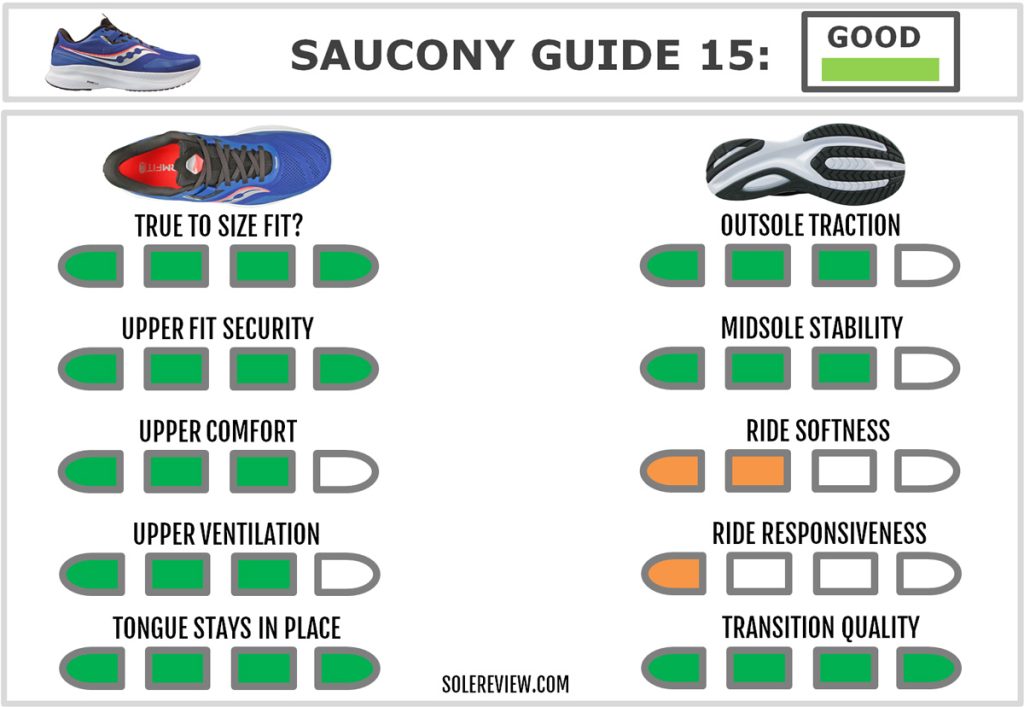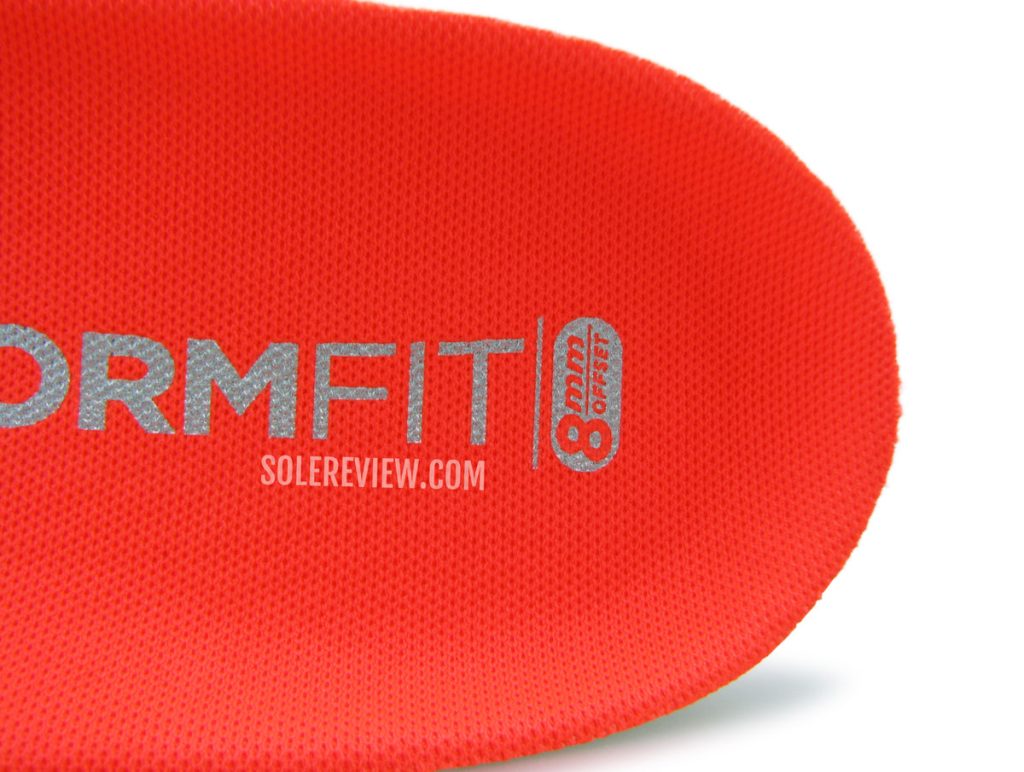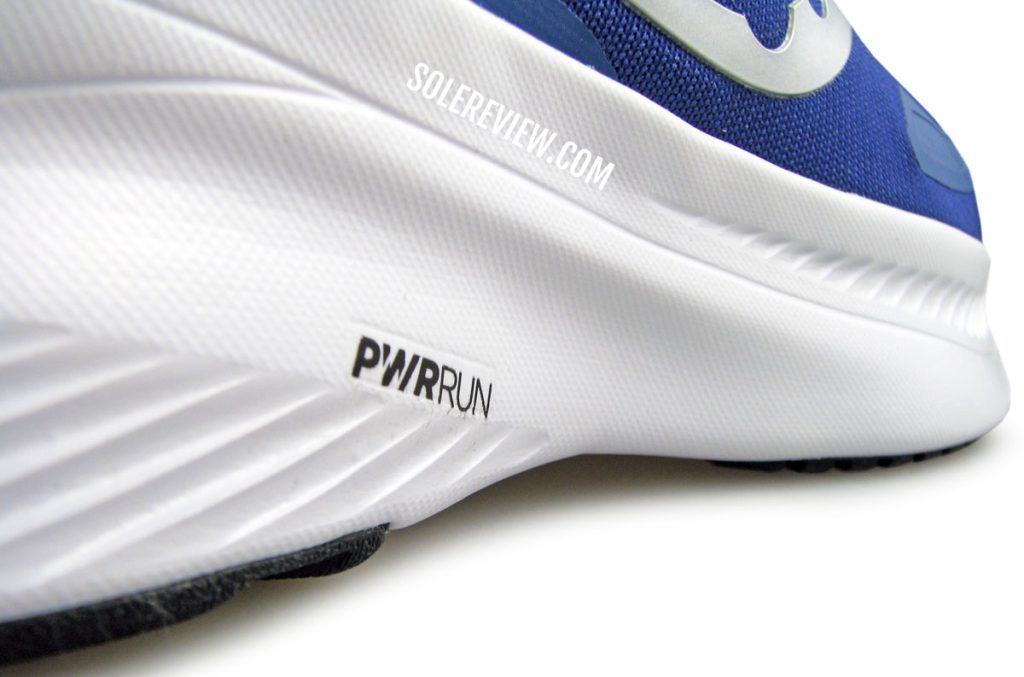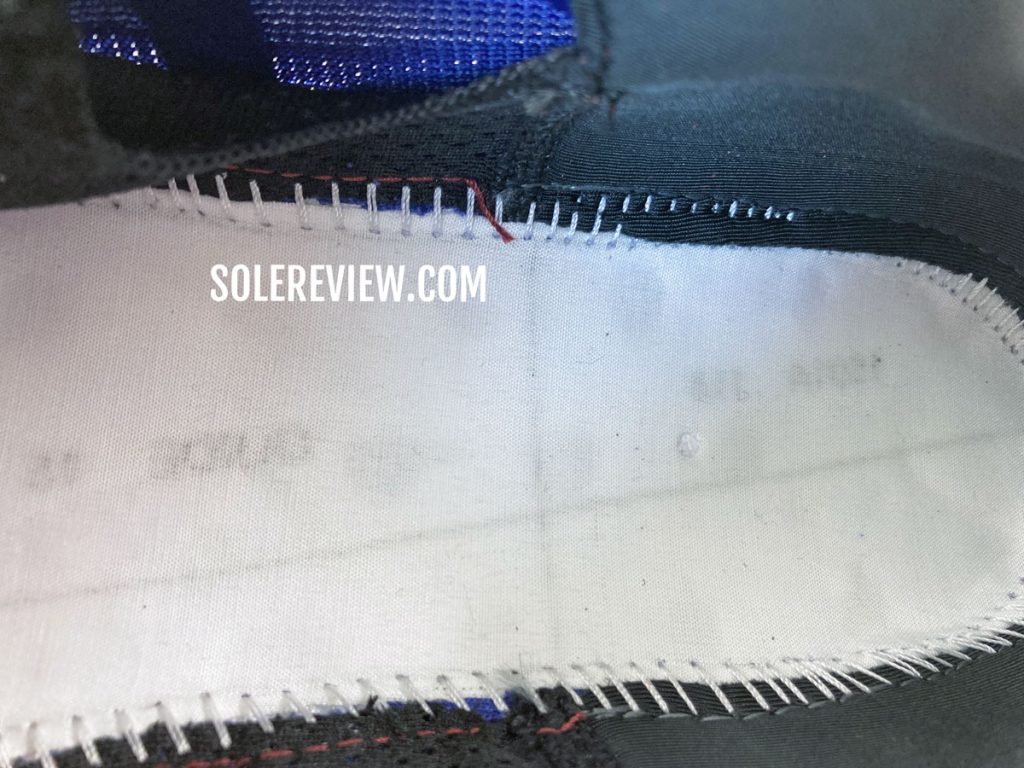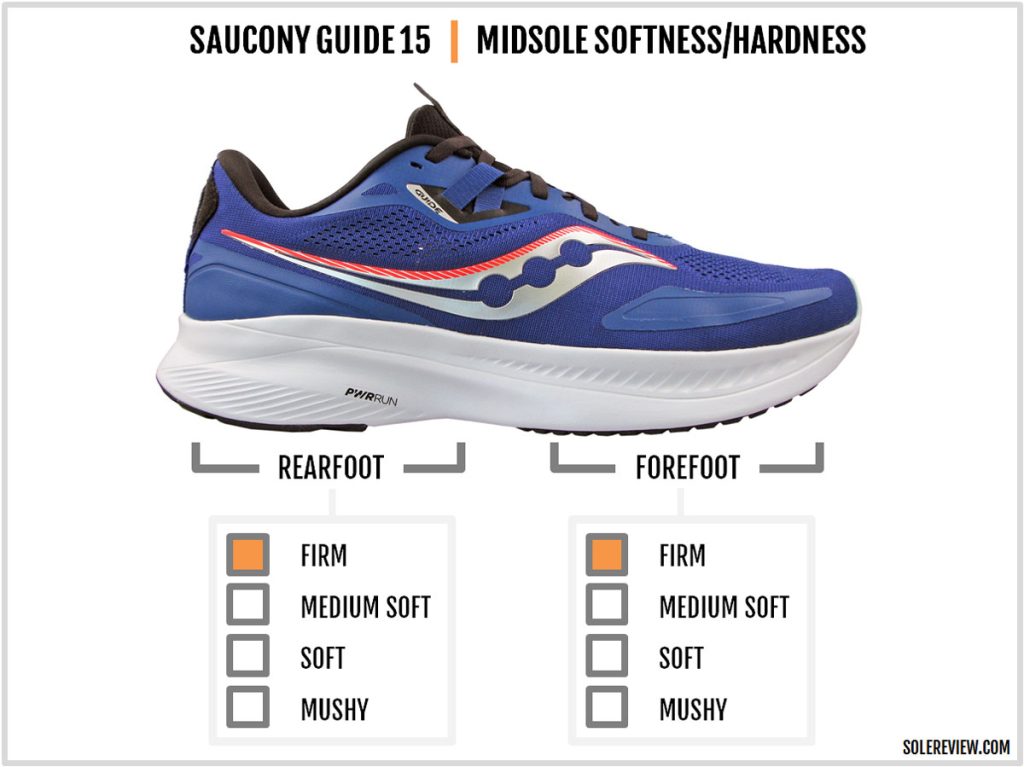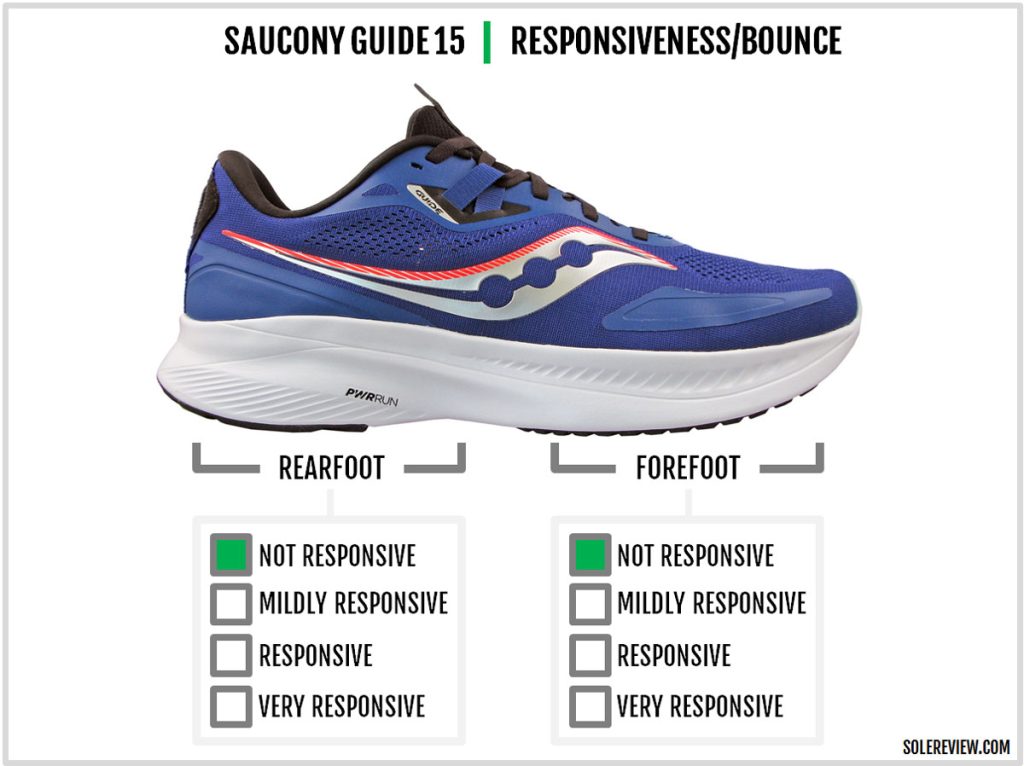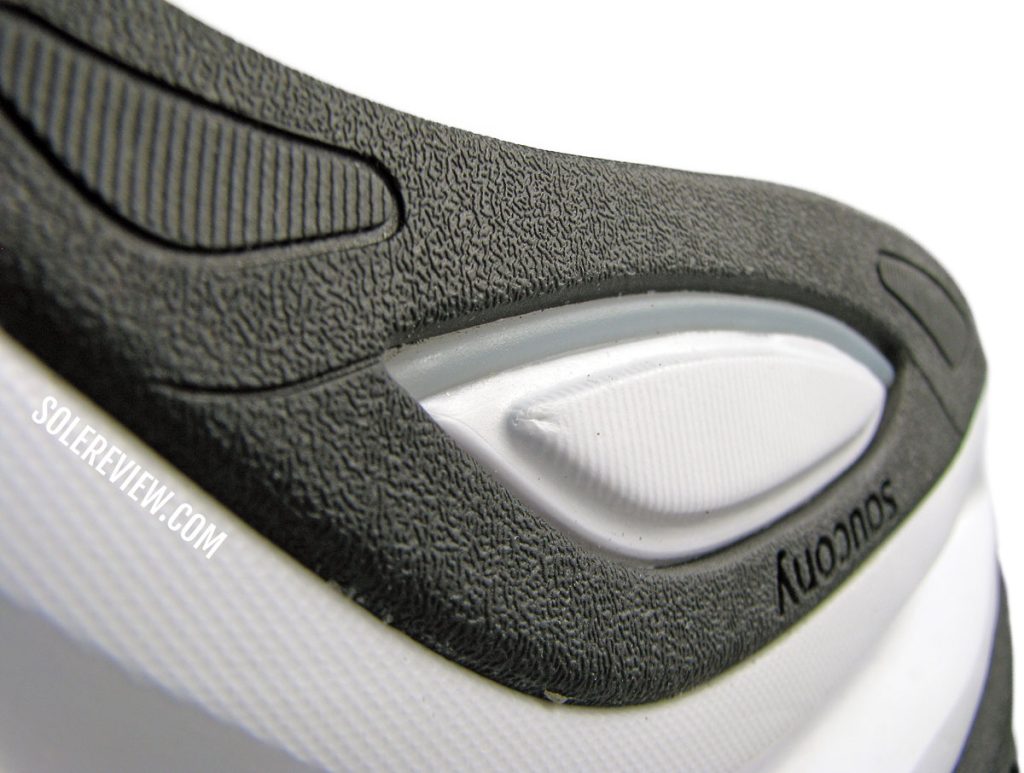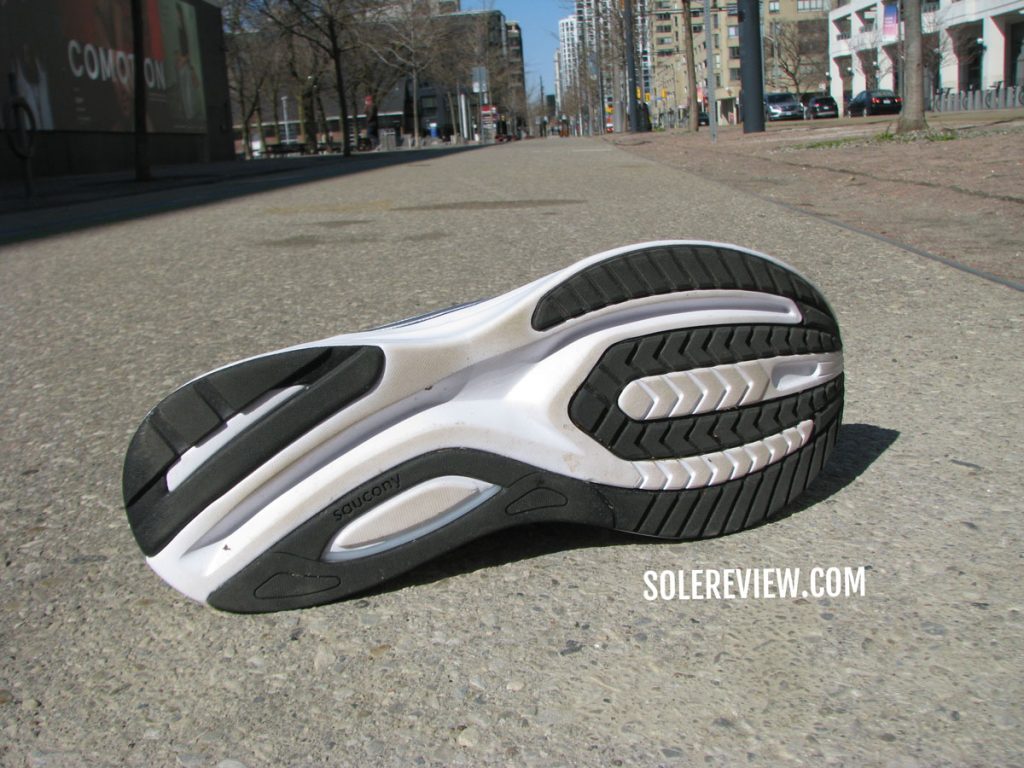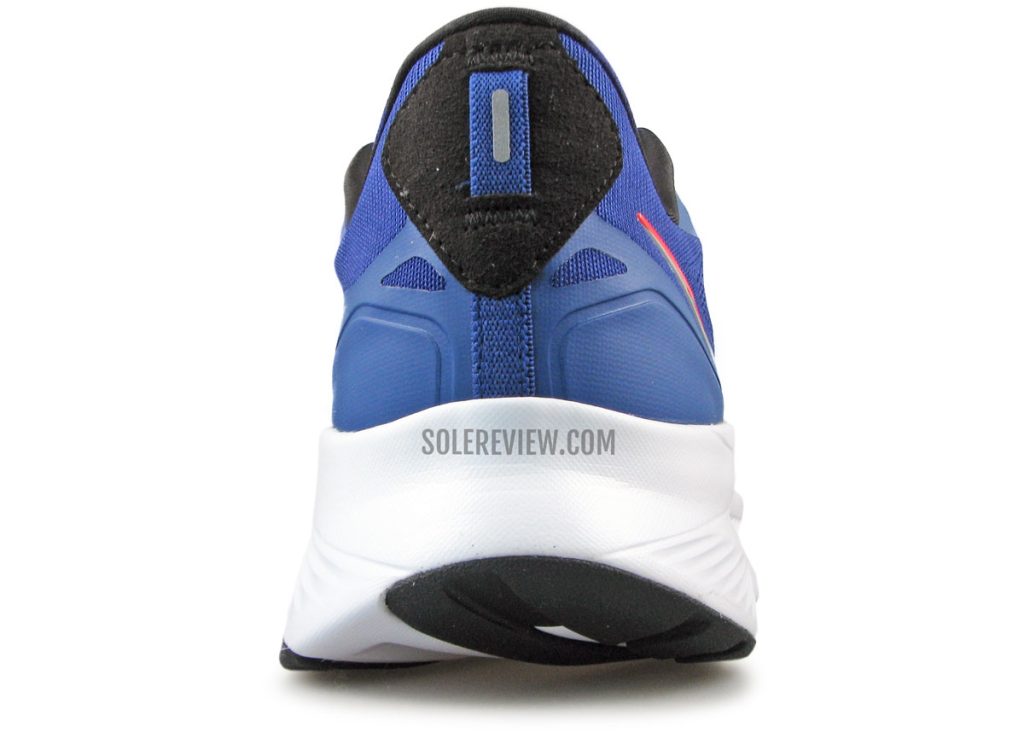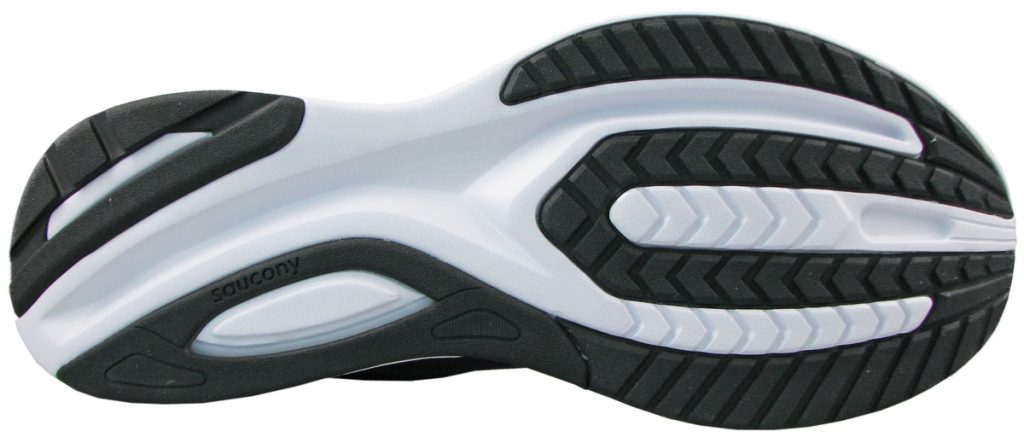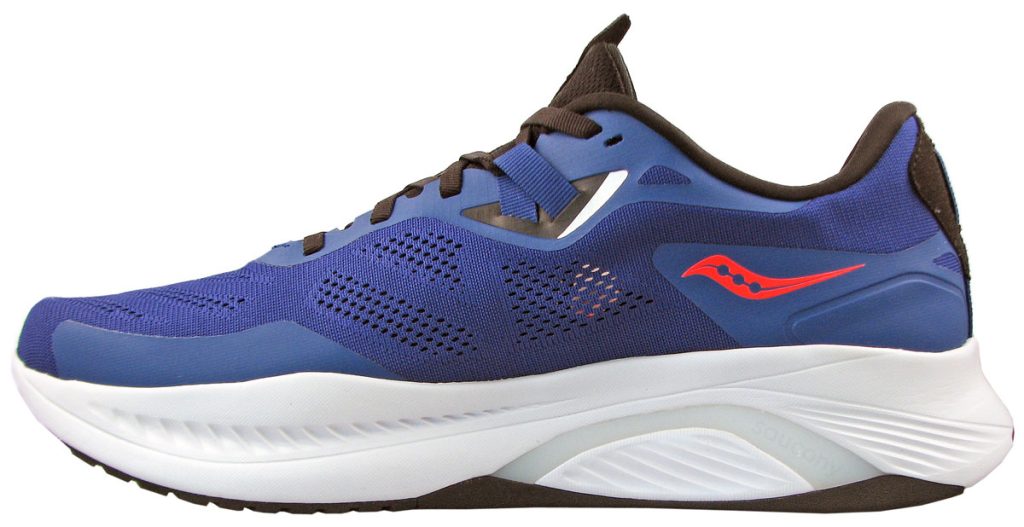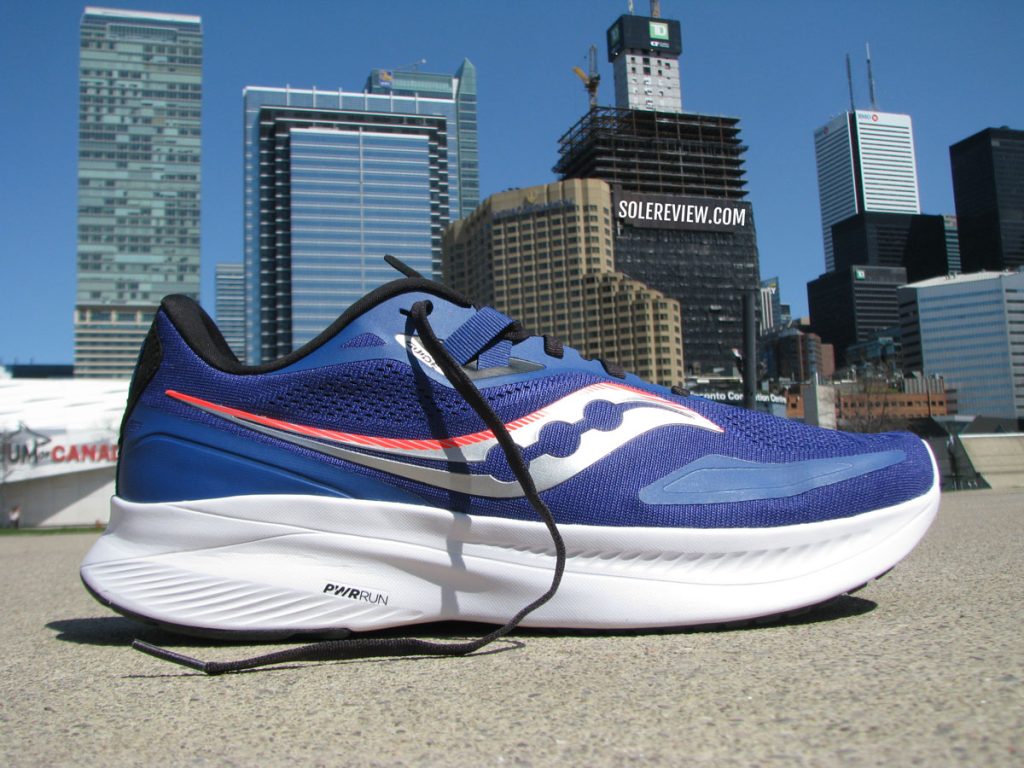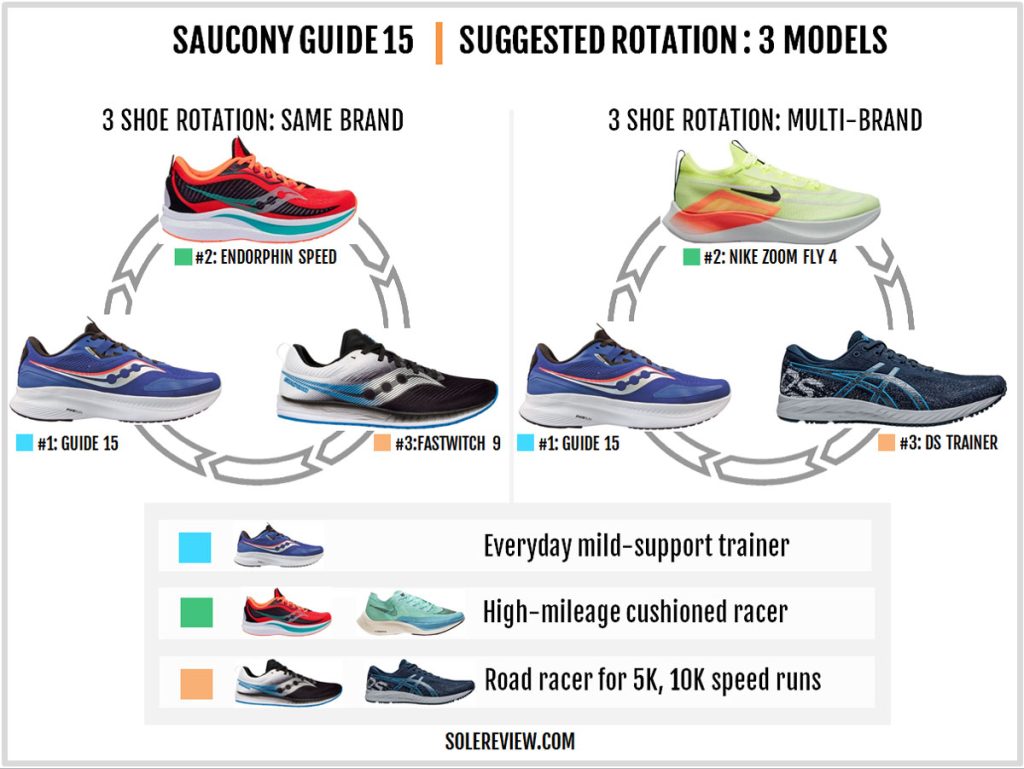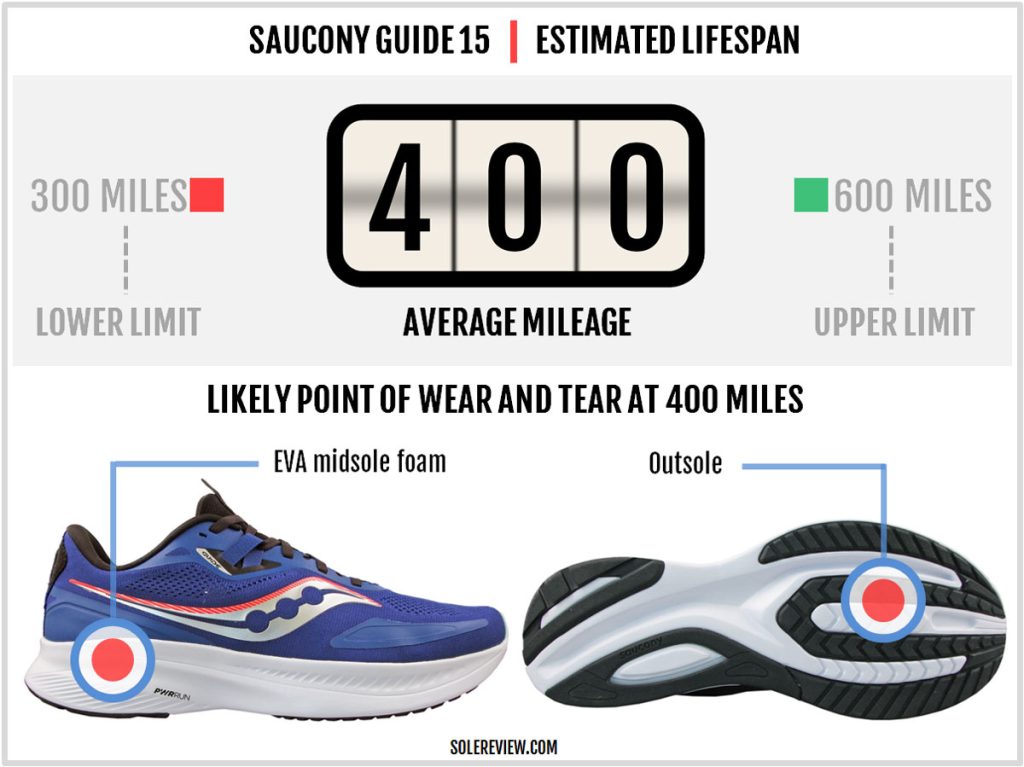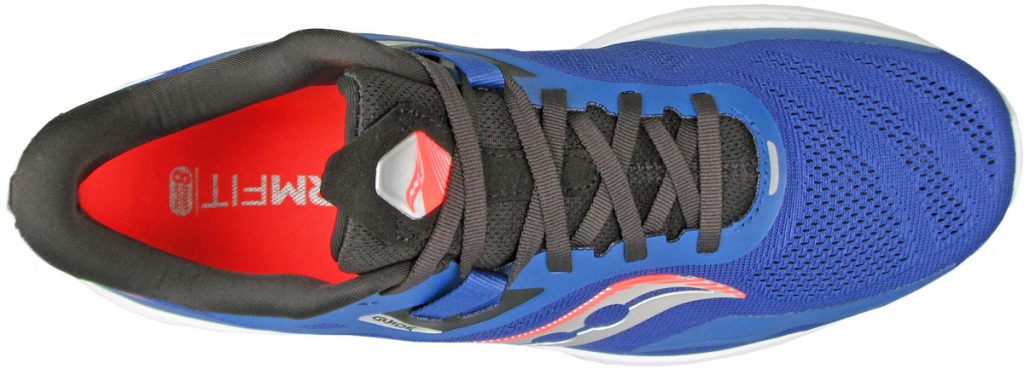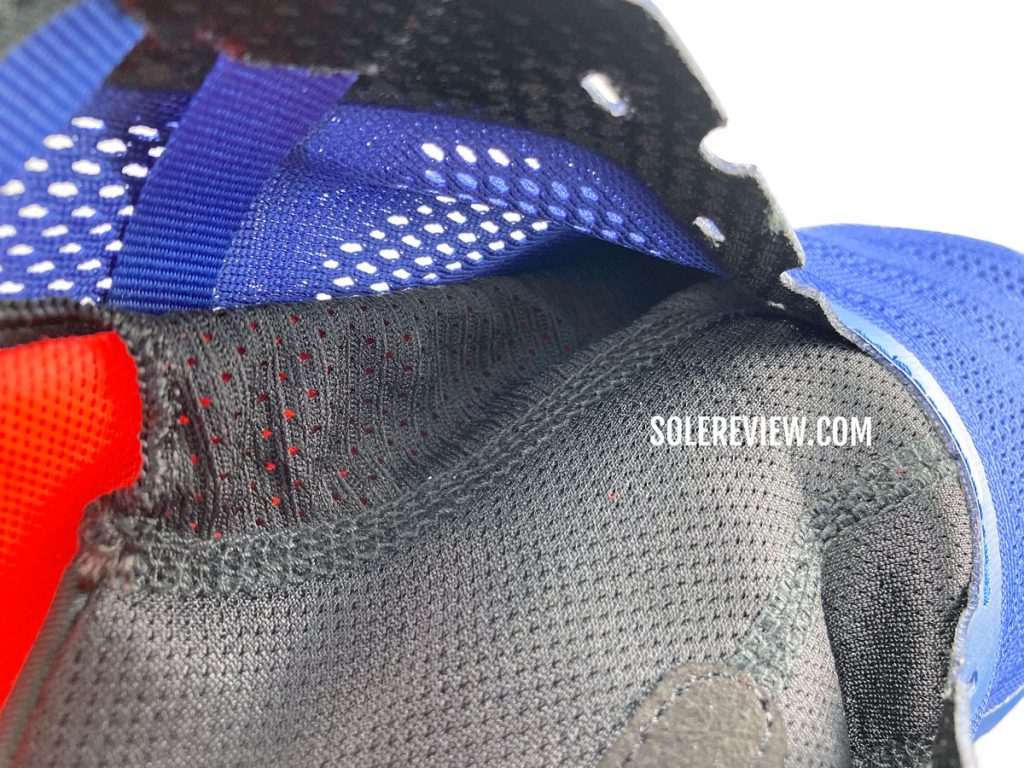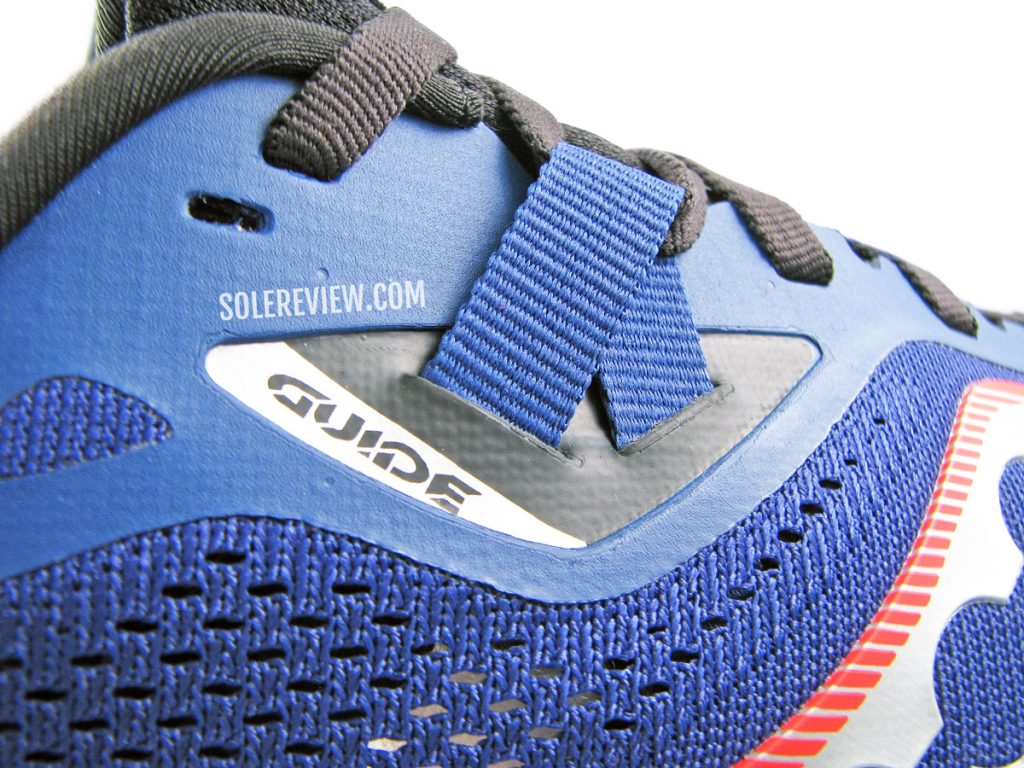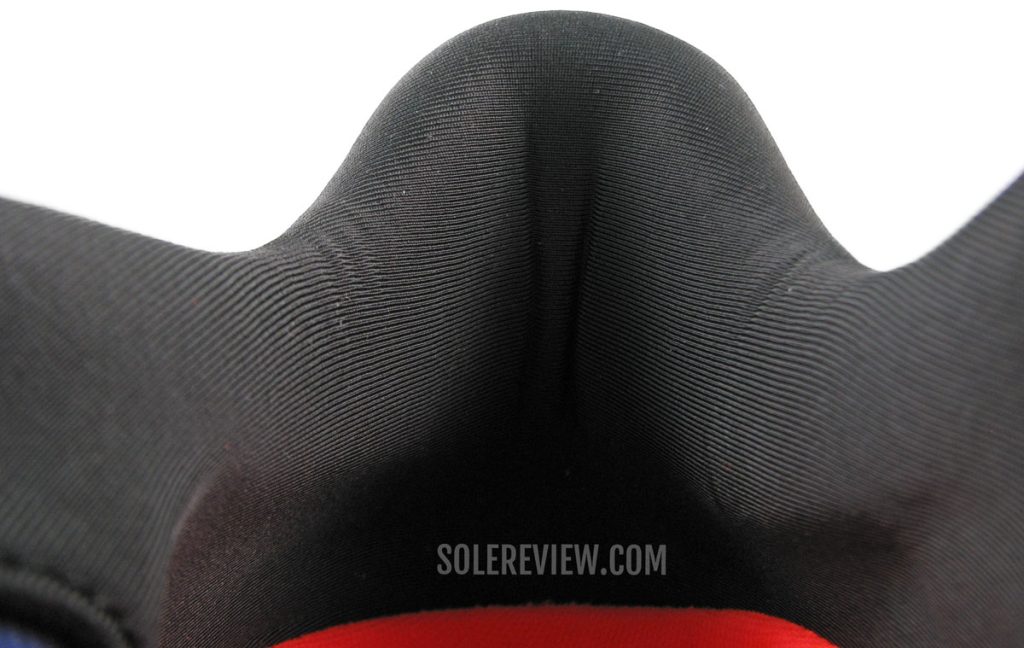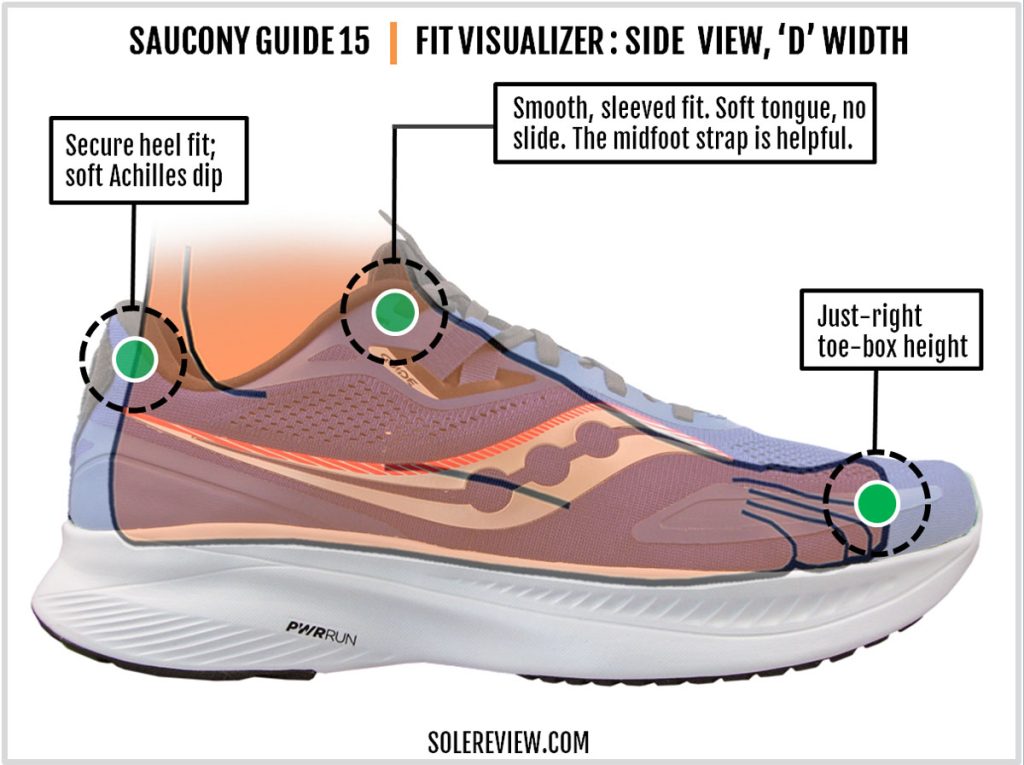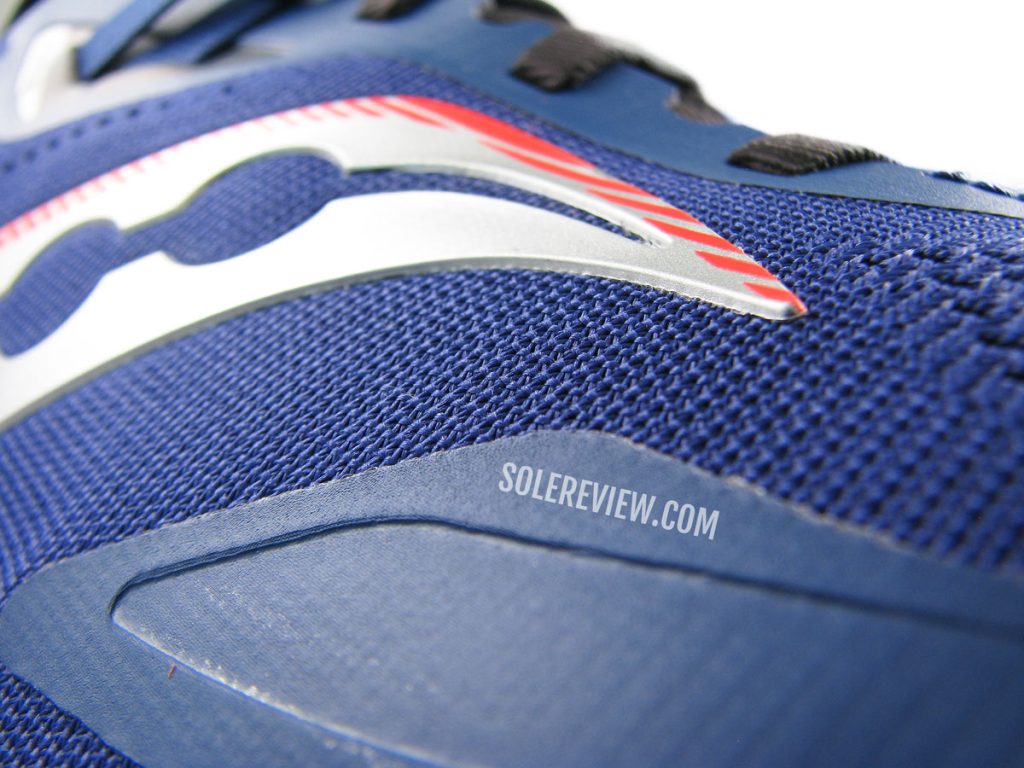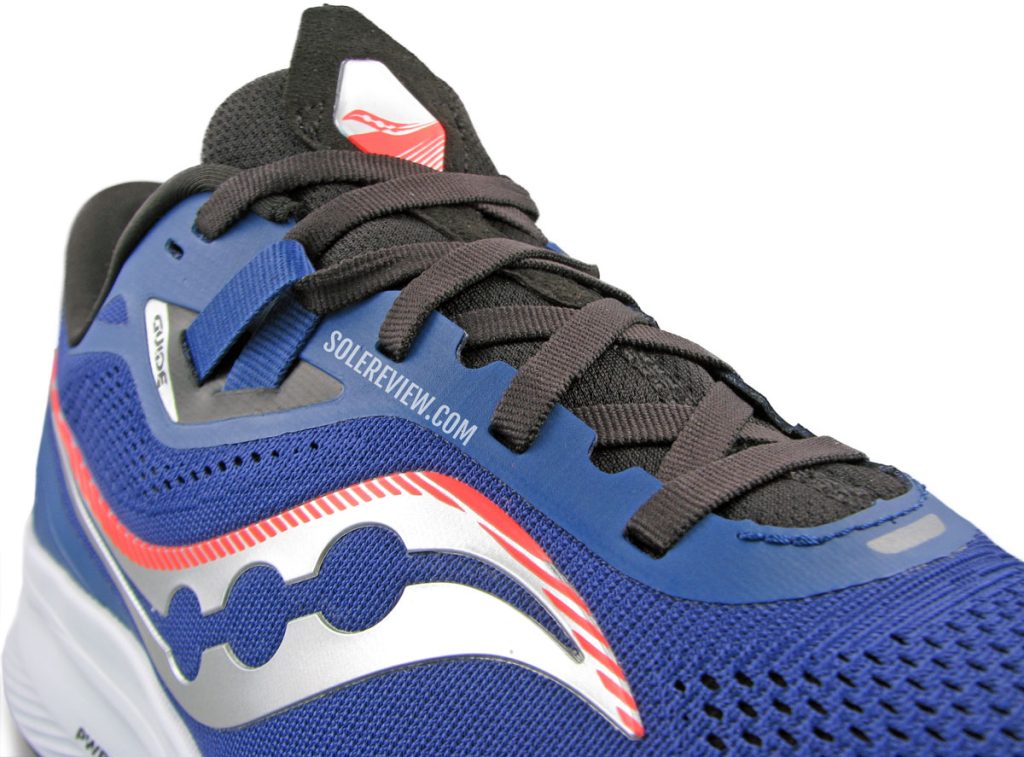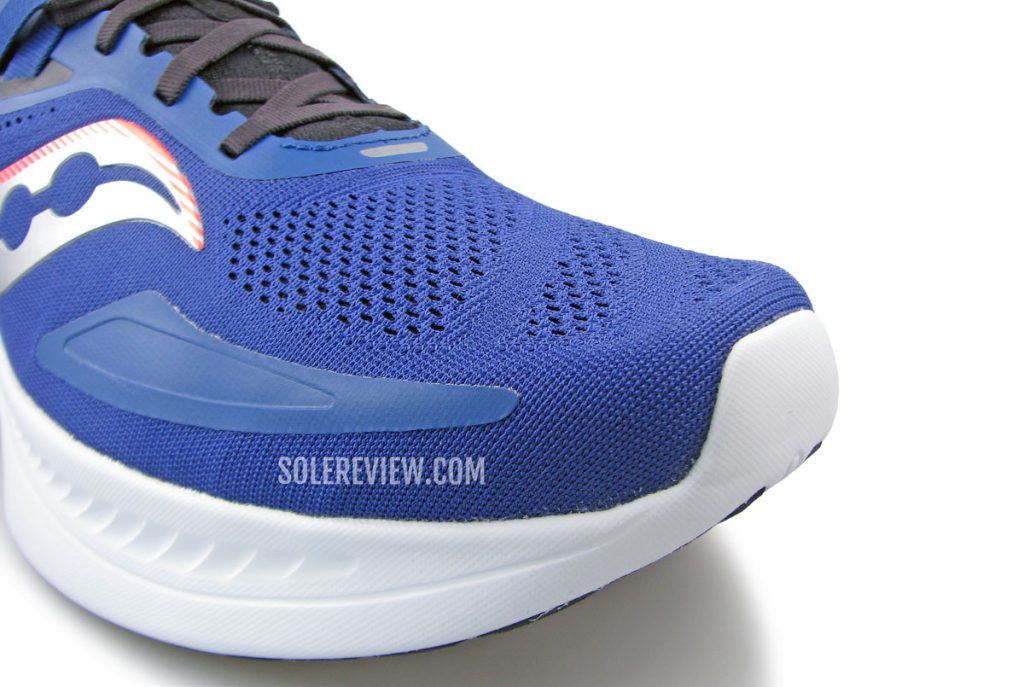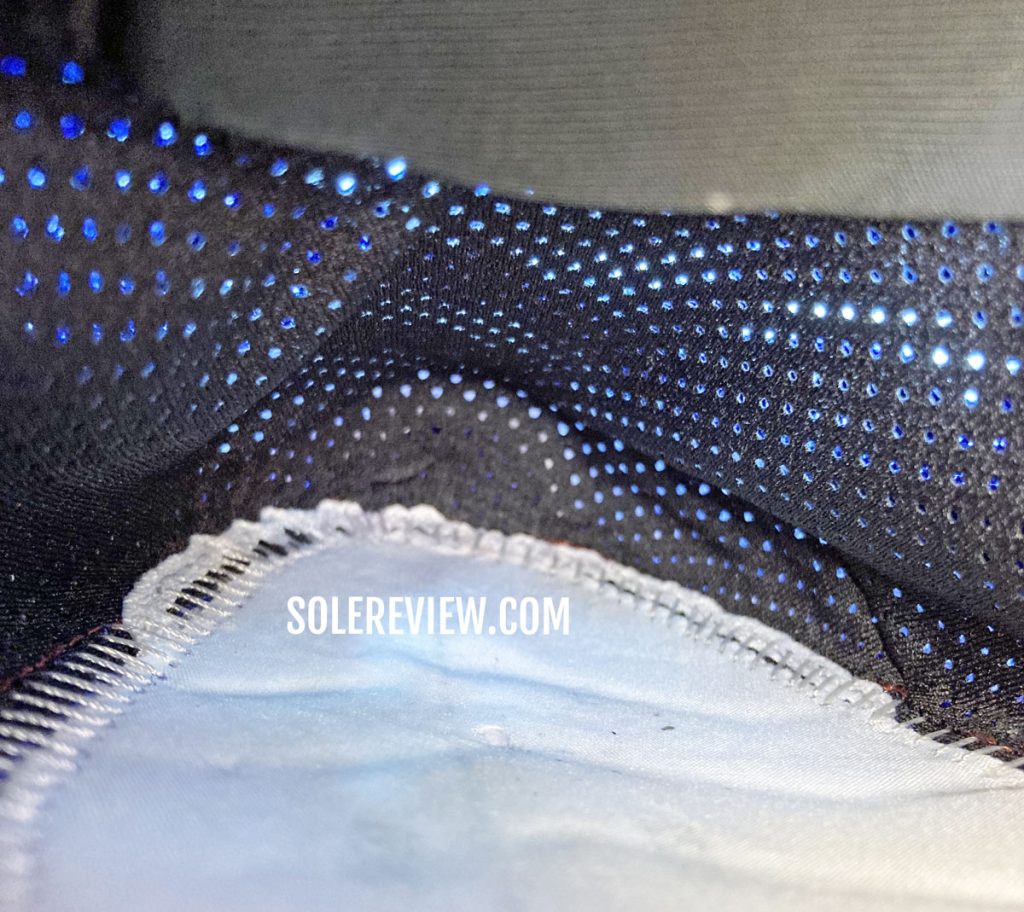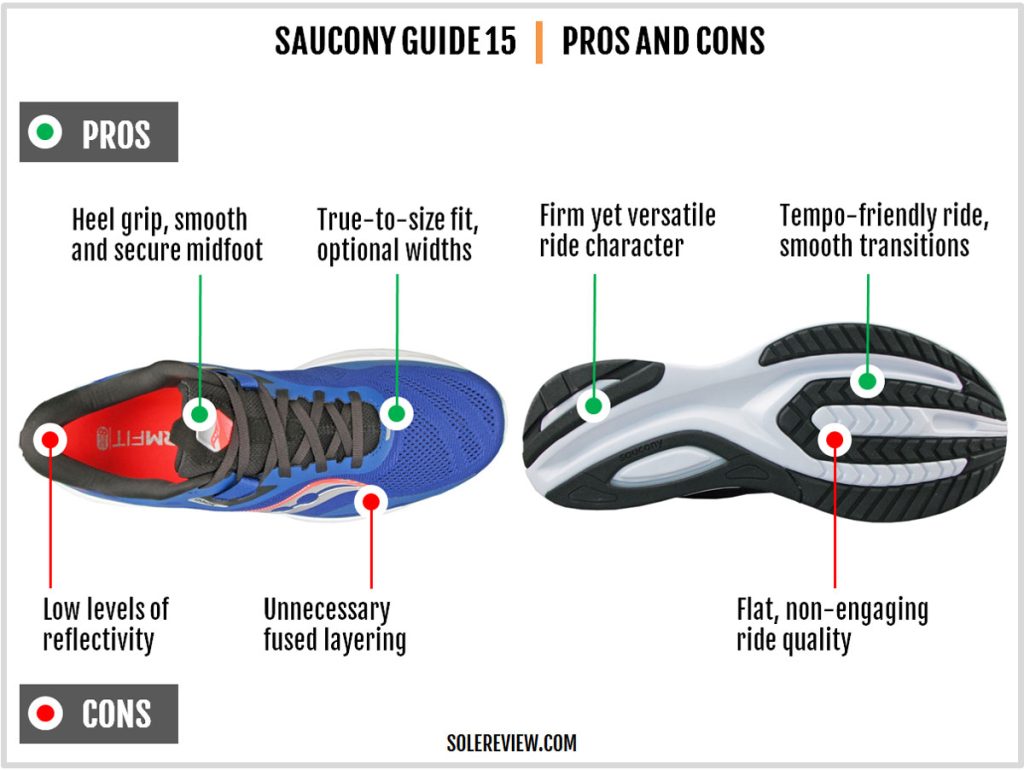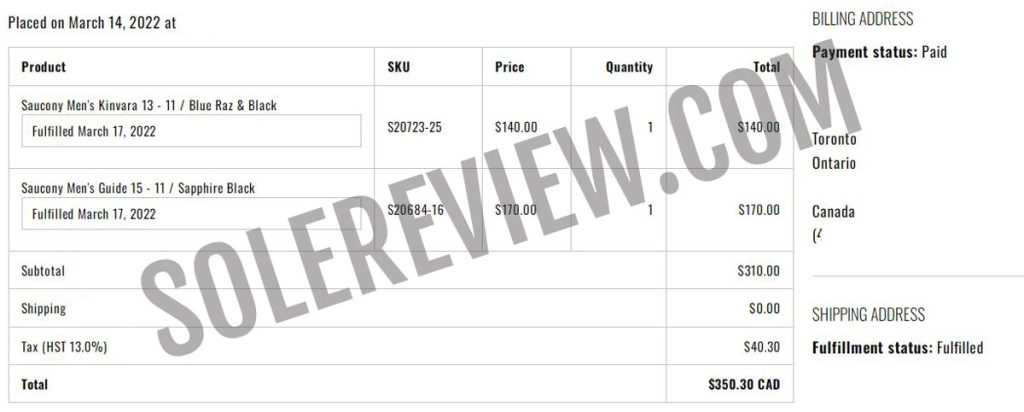
The Saucony Guide 15 was purchased at full retail price for our review. The amount is in Canadian Dollars.
In this review:
INTRODUCTION
It’s a known fact that the Saucony Ride 15 is a neutral shoe – the kind that doesn’t try to influence your gait. Our in-depth review also notes that the Ride’s firm and supportive midsole offers adequate ride comfort for everyday runs of various mileage and pace ranges.
The Saucony Guide 15 is to the Ride 15 what the Asics GT 2000 is the Cumulus, or the Brooks Adrenaline GTS to the Brooks Ghost. It’s a ‘stability’ variant of the Saucony Ride 15; in theory, the midsole design is meant to slow the inwards roll of the foot.
Until a few years ago, most of these so-called ‘pronation control’ running shoes had a ‘medial post’ – a stiff foam wedge that was co-molded into the inner midsole.
By making the inner midsole (arch side) firmer than the outer sidewall, the running shoe would attempt to slow the pronation. At least, that was the underlying premise.
However, the modern-day stability running shoe is an anachronism that’s no longer relevant; there’s no science backing these claims. We discussed this at length in one of our 2015 reviews – go have a read if you want to head down that rabbit hole.
So why do such shoes continue to exist?
It’s another category that brands can sell, and that translates into a financial upside. And as long as well-meaning, but ill-informed running shoe ‘experts’ continue to conduct ‘gait analysis’ in shoe stores, why get rid of something that results in sales?
And it’s not just the brands and retailers. After all, the shoe companies cannot sell a shoe that the market will reject. Many runners prefer the sensation of a medial post – or its equivalent – on the inner midsole.
In 2022, not many running shoes have an actual medial post. There are exceptions like the Asics GT-2000 10, New Balance Vongo V5, and 860V12, but most ‘stability’ products like the Brooks Adrenaline GTS 22 and Nike Structure 24 have deprecated midsole wedges.
Saucony too, abandoned the foam-based wedge several years ago. The Guide 14 came fitted with a plastic stabilizer, and the Guide 15 has one too. Except that it’s much larger and behaves similarly to an old-fashioned medial post.
With these updates, the Saucony Guide 15 has a noticeable cushioning bias that favors the outer side. In other words, the softer outer rearfoot is easier to compress when compared to the side with the plastic stabilizer.
But that begs the question: is the Guide 15 truly more ‘stable’ than the Ride 15?
Ironically, the Saucony Ride 15’s heel is more supportive than the Guide 15, and does a better job of keeping the weight centered. Unlike the Guide, the Ride’s transition groove runs down the center of the heel instead of being skewed asymmetrically.
This difference makes the Guide 15’s heel softer and (more) biased than the Ride 15.
The bottomline is: you should buy the Guide 15 only if you prefer a running shoe with a motion-control behavior. The Ride 15 is your shoe if you prefer a higher level of ride stability.
Else, both the Ride and Guide are evenly matched on cushioning softness (both have a firm ride). Though the Guide 15’s fused overlays result in a slightly snugger forefoot, both the models fit alike.
The new Pwrrun+ (E-TPU) insole, which made its debut on the Peregrine 12, is present in both models.
The minor differences aside, the Ride and Guide 15 are equally competent everyday trainers that are suitable for a wide range of use cases.
The midsole (and insole) packs sufficient ride comfort for distances up to a half-marathon. The firm foam stack works together with the outsole design (more on that later) to make the Guide and Ride suitable for tempo runs as well.
Like the Ride, the redesigned Guide 15 gets a $10 price increase.
THE RIDE EXPERIENCE
Let’s get the basics out of the way first.
The Guide 15’s midsole is made of a firm EVA-based foam that Saucony calls Pwrrun.
This model has always been an 8 mm heel drop shoe, and that does not change. However, the 8 mm heel offset is derived from higher stack heights of 35 mm (rear) and 27 mm (front). To put things in perspective, that’s 3 mm taller than the Guide 14.
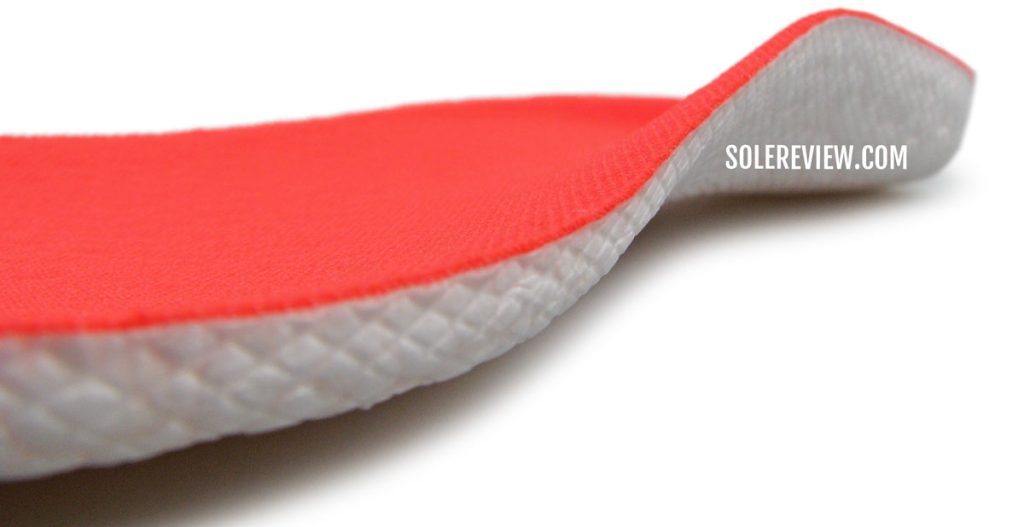
The Guide 15’s insole is made of Pwrrun+ E-TPU foam. This replaces the EVA insole + Pwrrun+ topsole of the Guide 14.
Atop the midsole is a brand-new insole that’s made entirely of expanded PU foam – also known as Pwrrun+.
Over the inner midsole is a plastic/TPU stabilizer that makes that side firmer. This plastic trim extends under the midsole and is covered by the outsole.
There’s a fair amount of outsole coverage – more so than the Ride 15. The additional components result in a 9.5 ounces/269 grams weight – making the Guide 15 nearly an ounce heavier than its ‘neutral’ counterpart.
Just like the prior versions, the midsole material has a ‘flat’ cushioning quality that lacks bouncy responsiveness.
The thick foam stack isn’t harsh at all. But its firmness doesn’t have a lot of give, nor does it ‘spring back’ like the Pwrrun PB on the Endorphin Speed or Pro.
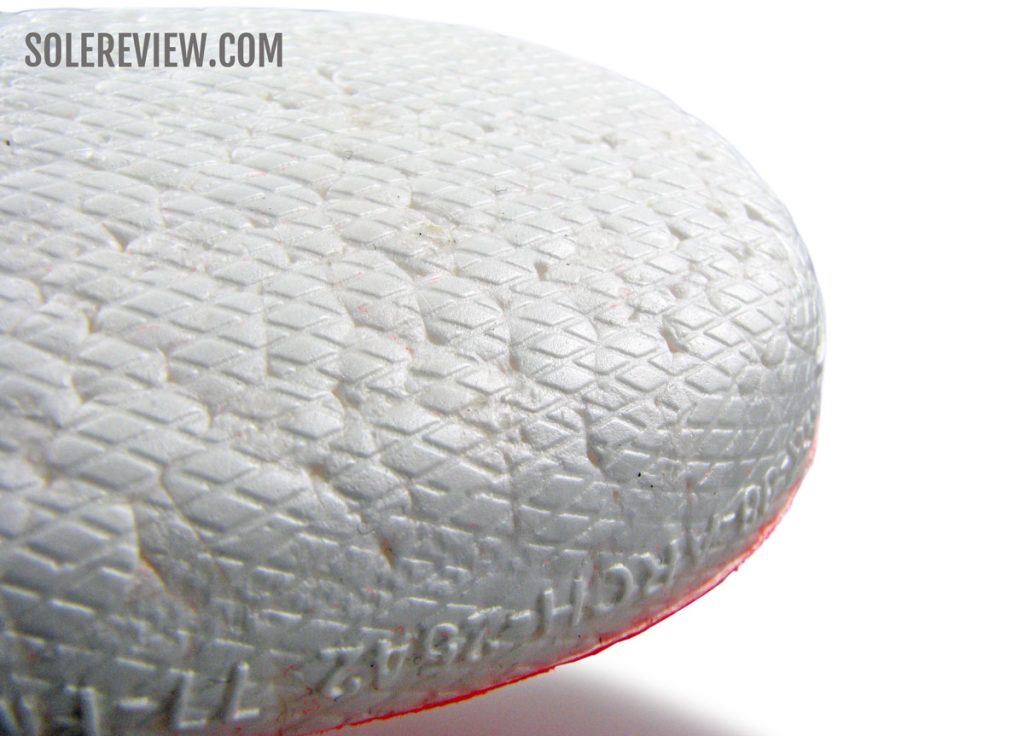
The Ride and Guide 15 both have Pwrrun+ (expanded Polyurethane) midsoles. It creates a cushy layer of step-in comfort.
Sure, the insole is made of expanded Polyurethane, but it plays a limited role in the larger scheme of things. It’s a nice layer of step-in comfort, and has a similar effect as the Guide 14’s topsole and insole.
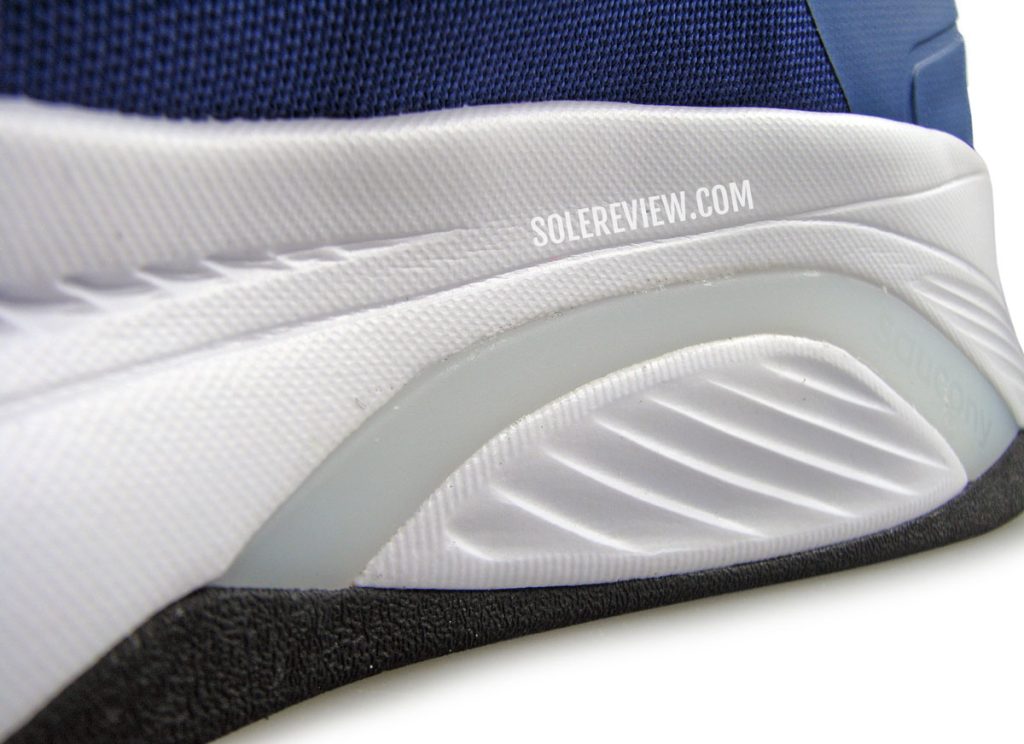
The Guide 15 may not have a traditional medial post, but this plastic stabilizer sure acts like one.
The stiff reinforcement over the inner midsole is what separates the Guide 15 from the Ride 15.
It’s not just cosmetic, and has implications on the ride character. Much like a medial post, the stabilizer makes the inner midsole firmer – to the point that it produces a noticeable cushioning bias.
Besides the stabilizer, several other design features give the Guide its cushioning bias.
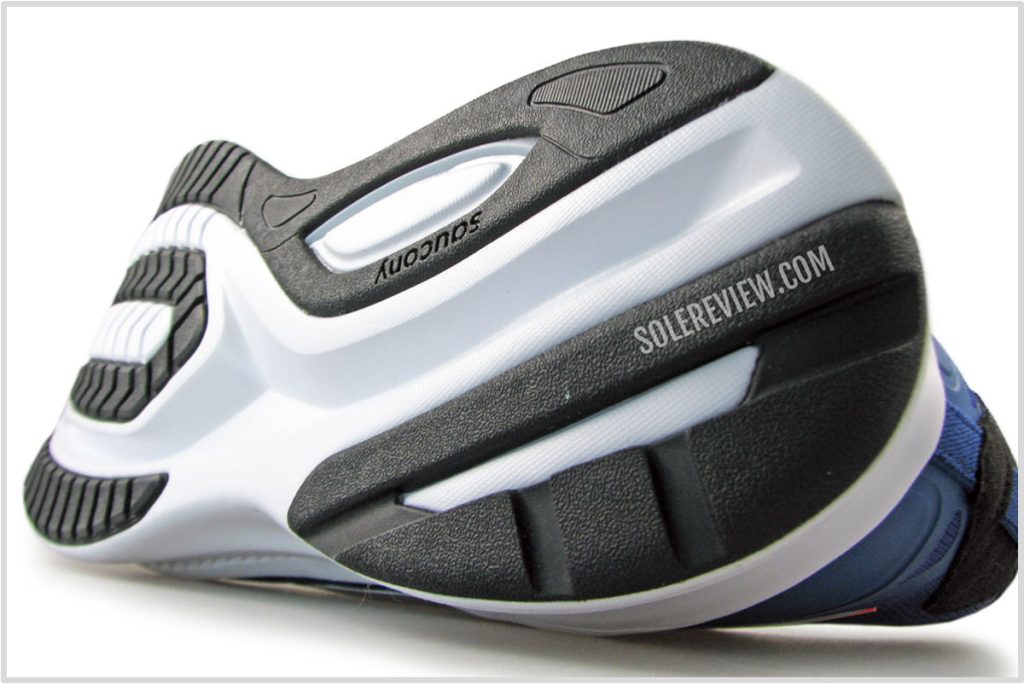
The outsole has an asymmetrical transition groove that gives the outer heel crash pad a wider range of movement.
Unlike the Ride 15’s transition channel that runs along the heel center, the Guide 15 has an asymmetrical channel that gives the outer heel better articulation.
During rearfoot landings, the deep grooves allow the outer heel to flex. This is what makes the Guide 15’s heel softer than the Ride – all while producing the noticeable cushioning bias.
Interestingly, even neutral running shoes relied on a similar design until a few years ago. For example, the Ride 14 had an asymmetric transition groove.
The forefoot and full-contact landings feel planted, thanks to the wide midsole base and liberal use of outsole rubber.
At a stack height of 27 mm, there’s plenty of foam under the forefoot. That translates into a high level of ride comfort, if not softness. It’s also worth mentioning that the forefoot outsole is a (softer) blown rubber, and that allows it to blend into the midsole cushioning.
The Guide 15’s inner forefoot midsole has slightly raised sidewalls – something that the Ride 15 does not. It works together with the synthetic overlay on the upper to prevent the foot from sliding off the midsole.
Unlike the Ride 15, the Guide 15’s forefoot lacks flex grooves. While the outsole isn’t flush with the midsole like on the Ride 15, the rubber lugs sit low and close to the foam. The traction is good and on par with the Guide 14.
If you’re a rearfoot striker, you’ll sense the outer crash pad and inner midsole as two distinct sections. The firm, plastic stabilizer is felt under the foot, whereas the softer outer heel has a higher willingness to compress when loaded.
The rest of the midsole has a smooth and stable ride that helps produce speed on demand. The forefoot is not very flexible, so that promotes quick turnovers. Though the cushioning is firm, the ride quality isn’t punishing over longer distances.
The Guide 15 is a capable trainer for everyday runs and distances up to a half-marathon. Its versatility is on the same level as the Ride 15 – for instance, even if you’re running at a 4:30 min/km (7 min/mile) pace, the supportive midsole has no trouble keeping up.
At the same time, there’s ample cushioning protection – albeit of a firm kind – for daily workouts on the road, concrete trails, or treadmill.
RECOMMENDED ROTATION
The Saucony Guide 15 fits perfectly into a three shoe rotation. Our recommendation for a race-day speed shoe would be the Saucony Fastwitch 9 or the Asics DS-Trainer 26. The medial posts of these low-profile racing shoes give them a minor cushioning bias.
If you don’t care about a medial post, then we also recommend the Asics Hyper Speed. It’s a firm racing shoe that makes quick work of 5K and 10K distances.
We did mention that the Guide 15 lacks cushioning softness, and that could be a problem for marathon-level mileage.
In that case, cushioned (and plate-equipped) racers like the Saucony Endorphin Speed 2 or the Nike Zoom Fly 4 are excellent choices.
IS THE SAUCONY GUIDE 15 DURABLE?
A trouble-free mileage of 400 miles is expected out of the Saucony Guide 15. The firm midsole appears to have a high resistance to cushioning fatigue, and the blended outsole slows down the wear and tear.
Unlike the past models that had an EVA foam insole, the new footbed uses expanded Polyurethane. As a material, E-TPU lasts longer than EVA-based foams, so that bodes well for longevity.
The sleeved upper is double-layered and reinforced with synthetic layers, so nothing on the upper suggests a fragile build quality.
THE UPPER DESIGN AND FIT
The Guide 15’s upper doesn’t have any surprises; its true-to-size interior surrounds the foot in secure comfort.
Inside the upper is a fully-sleeved construction that holds the padded tongue in place. As a result, tongue movement is non-existent, and the interior feels seamlessly smooth – because it is.
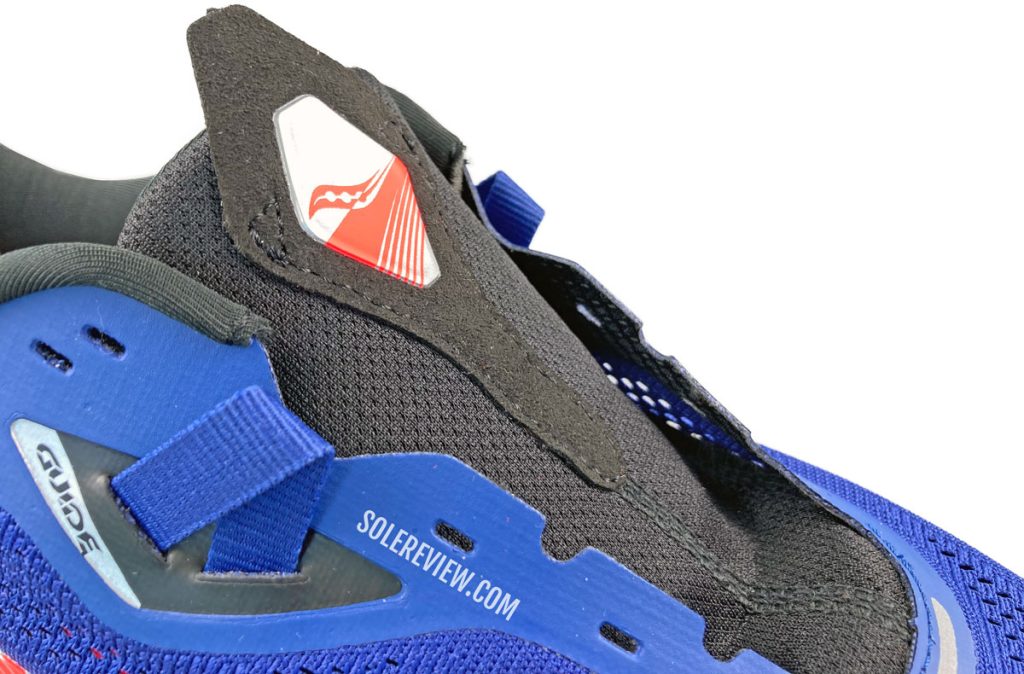
The padded tongue and its synthetic suede overlay do an excellent job of absorbing the top-down lacing pressure.
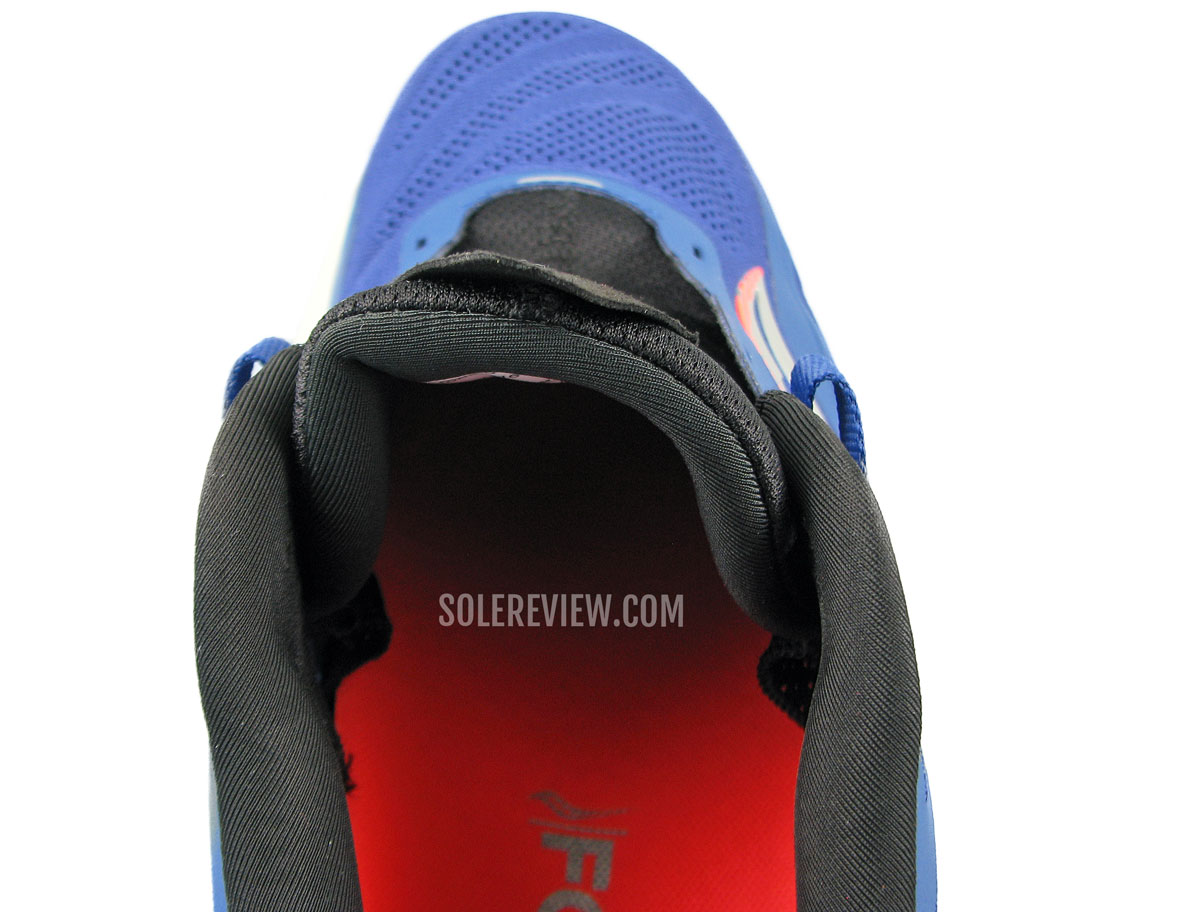
The tongue has just the right amount of foam padding.
The midfoot fit is excellent. The thin laces have a bit of stretch, and that helps it stay tied during runs. The Guide has loop-assisted lacing; a pair of midfoot straps connect to the laces for a secure fit.
In the back, the padded collar and low-height heel counter do an excellent job of locking the heel in.
There is only a tiny amount of reflectivity on the upper, and in a lower quantity than the Guide 14. Unlike the previous model which had a large strip over the heel, the new model only has two tiny printed trims on the heel and forefoot.
In our recent Ride 15 review, we called out the excellent fit that was a sweet spot between interior comfort and secure fit. There wasn’t much scope left for improvement.
So when we see all the layering on the Guide 15, it feels like a gratuitous exercise which was done just for the sake of it. It’s almost as if Saucony is shouting – ‘Look! This is a stability running shoe! Even the upper has extra layering, see?’
For example, the forefoot has two synthetic overlays – one on each side. The layering on the inner side is somewhat useful, as it aligns with the raised midsole wall to prevent the foot from sliding.
However, it’s hard to make a case for the outer overlay. This piece just sits on the forefoot without being productive.
If anything, it gets in the way of a distraction-free fit, as this component is sensed when the midsole is flexed. This layer also makes the small toe side narrower than the Ride 15 because it prevents the mesh from expanding.
Other parts of the Guide 15 are also layered with synthetic. The lacing panel is reinforced, and so is the outer heel. Again, this was completely unnecessary.
Ironically, the inner side of the midfoot doesn’t have a Saucony logo like the Ride 15.
The ventilation is good, but could be better. The pores on the engineered mesh are smaller than the Ride 15, so that slows down the airflow.
From a fit standpoint, the toe-box is excellent. The last profile and internal toe-bumper create a safe and dedicated space for the toes.
PROS AND CONS
The Saucony Guide 15 is everything that a traditional ‘stability’ running shoe should be.
Though its true midsole stability is lower than the Ride 15, the firm plastic stabilizer delivers a motion-control ride behavior that’s similar to shoes with medial posts.
Like the Ride 15, the Guide 15 has a firm cushioning that’s suitable for various use cases. The EVA-based Pwrrun+ isn’t very exciting to run in, so it helps to manage expectations.
Though we see the synthetic overlays on the upper as unnecessary, it doesn’t take away the fact that the Guide 15 has a true-to-size fit with excellent interior comfort and lock-down.
SHOES SIMILAR TO THE SAUCONY GUIDE 15
The following list of comparable shoes can be divided into two groups – one with a medial post, and another without.
Here, the New Balance Vongo V5 has the largest medial post, so that creates a cushioning bias that’s similar to the Guide 15. That’s not the only feature that the Vongo has in common with the Guide 15. Like the latter, the midsole has an 8 mm heel offset and a firmly-cushioned ride.
Asics may no longer advertise the ‘Duomax’ medial post on the GT-2000, but trust us – it’s there. A firmer section of foam is co-molded into the rest of the midsole.
However, the Asics GT-2000 10 doesn’t have a noticeable cushioning bias like the Guide 15 or Vongo 5 does. As pointed out in our review, it’s a softer running shoe as well.
There are several other supportive running shoes without a cushioning bias. The Brooks Adrenaline GTS 22 has raised sidewalls (aka the Guiderails) for under-arch support, and the firm midsole creates a stable ride character.
The Nike Structure 24 and adidas Solarglide 5 are neutral shoes with any gait-influencing features, but possess an excellent blend of ride comfort and stability.
Lastly, if you couldn’t care less about the plastic stabilizer, the Guide 15’s ‘neutral’ equivalent – the Ride 15 is a versatile everyday trainer with a supportive midsole.
Do you own this shoe? Improve this review by sharing your insights – submit a review here.

